Paragliding harnesses : choosing the right harness for your paraglider

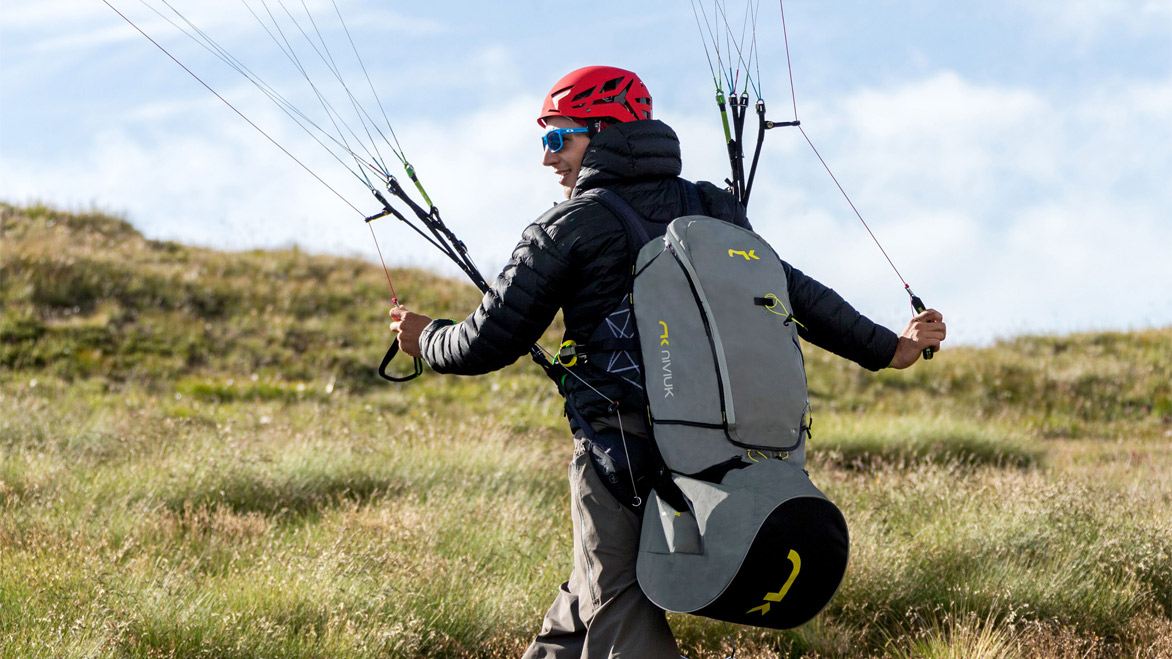
Like all disciplines, paragliding can be broken down into several different disciplines. Distance flying, Speed Flying, walking and flying (vol rando), free flight, cross-country, etc.... And for each type of paragliding, there are different harness models. So it's vital to understand the different types of paragliding harness so you can choose the right model for your style of paragliding.
WHAT IS A PARAGLIDING HARNESS AND WHAT IS IT USED FOR ?
As you probably know, paragliding includes not only the paraglider, also known as the wing, but also a paragliding harness, which is the “seat” in which you sit. Beyond the comfort aspect, paragliding harnesses have very important technical aspects! The type of protection (airbag, foam bag, koroyd, etc.), ABS (harness stability system), seatboard or leg straps, reversibility, etc. These technical aspects will be more or less adapted depending on whether you're looking for maximum safety, or minimum weight. So, before choosing your harness, you need to know what type of paragliding you'll be doing. Once you've defined this, you'll be able to choose the right equipment by following these few tips.
WHAT TYPE OF PARAGLIDING HARNESS IS THERE ?
Paragliding seated harnesses are the most widely used harnesses, as they are often the most comfortable, and particularly well-suited to paragliding. These harnesses have a seat made from a seat plate (wood, polypropylene, etc.) generally 30 to 40 centimeters wide.
String harnesses, which are the second type of frame, have no seat plate. This gives both legs a little more freedom of movement in relation to each other. They are more or less independent, which translates into different sensations in flight than flying with a planchette harness. This doesn't mean that they aren't suitable for beginner pilots. It's just a matter of getting used to the way one or the other handles.
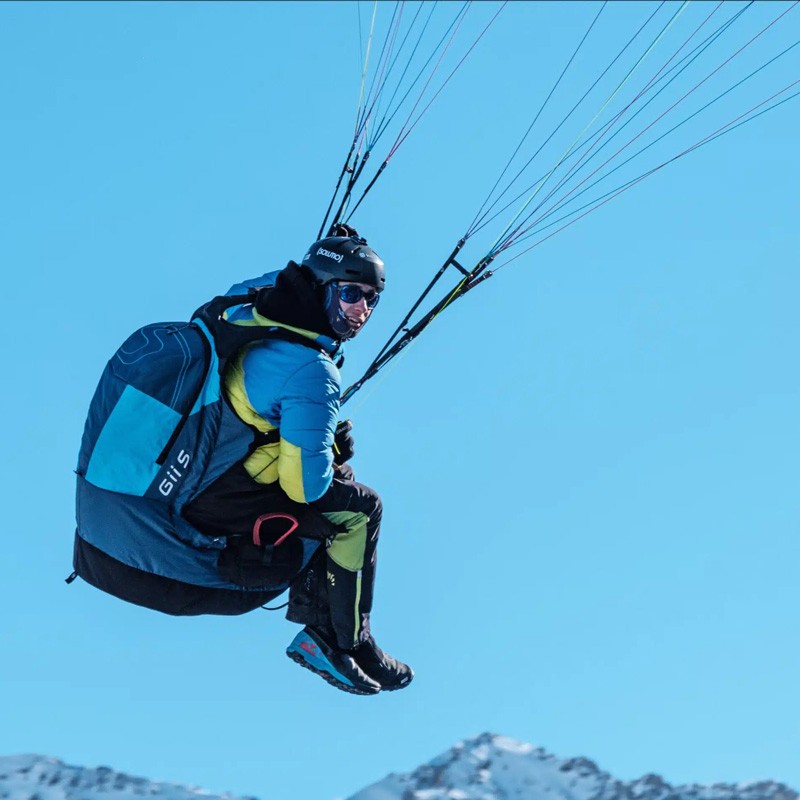
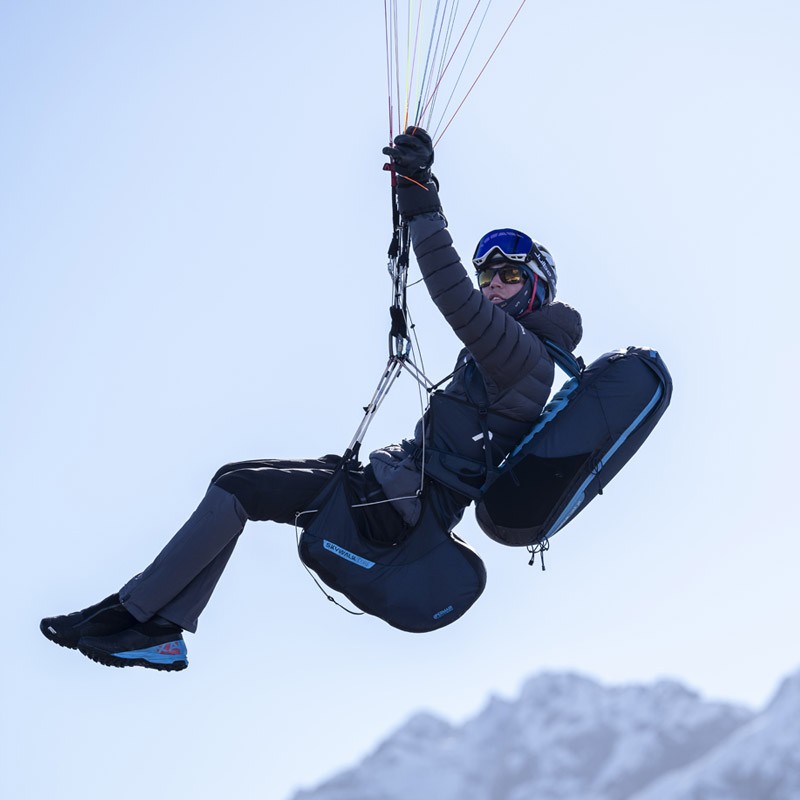
REVERSIBLE PARAGLIDING HARNESS : A HARNESS THAT BECOMES A RUCKSACK
Reversible harnesses can be either seated harness or string harness. They have the advantage of having an integrated rucksack. For some of these harnesses, the rucksack is removable, so it can be completely dissociated from the harness to keep as much weight as possible! Beware, however, that the volume of the reversible harness bag may be too small (this applies to some reversible leg harnesses) to accommodate all your gear. You should therefore generally choose light paraglider and light rescue parachutes for these harnesses, i.e. compact equipment with light weight.
COCOON HARNESS : BOOST YOUR AERODYNAMIC PERFORMANCE WHILE GAINING IN COMFORT
The cocoon harness is generally designed for paraglider pilots who want to fly for several hours and/or who are looking for performance. Indeed, these harnesses have the particularity of having what is called a “skirt” which is positioned at the front. After take-off, after the pilot has played with his legs, this skirt is positioned around the pilot's legs, allowing him to fly with his legs stretched out. This has the advantage of being very comfortable, keeping the pilot warm, and making the pilot a little more “aerodynamic”. This last point is not insignificant when you're looking to improve performance and flight time. For landing, simply pull your legs out of the skirt, and you'll land in complete safety. The comfort of piloting, and of the position, offers a high level of safety and flight volume for pilots looking for sensations and a high level of play!
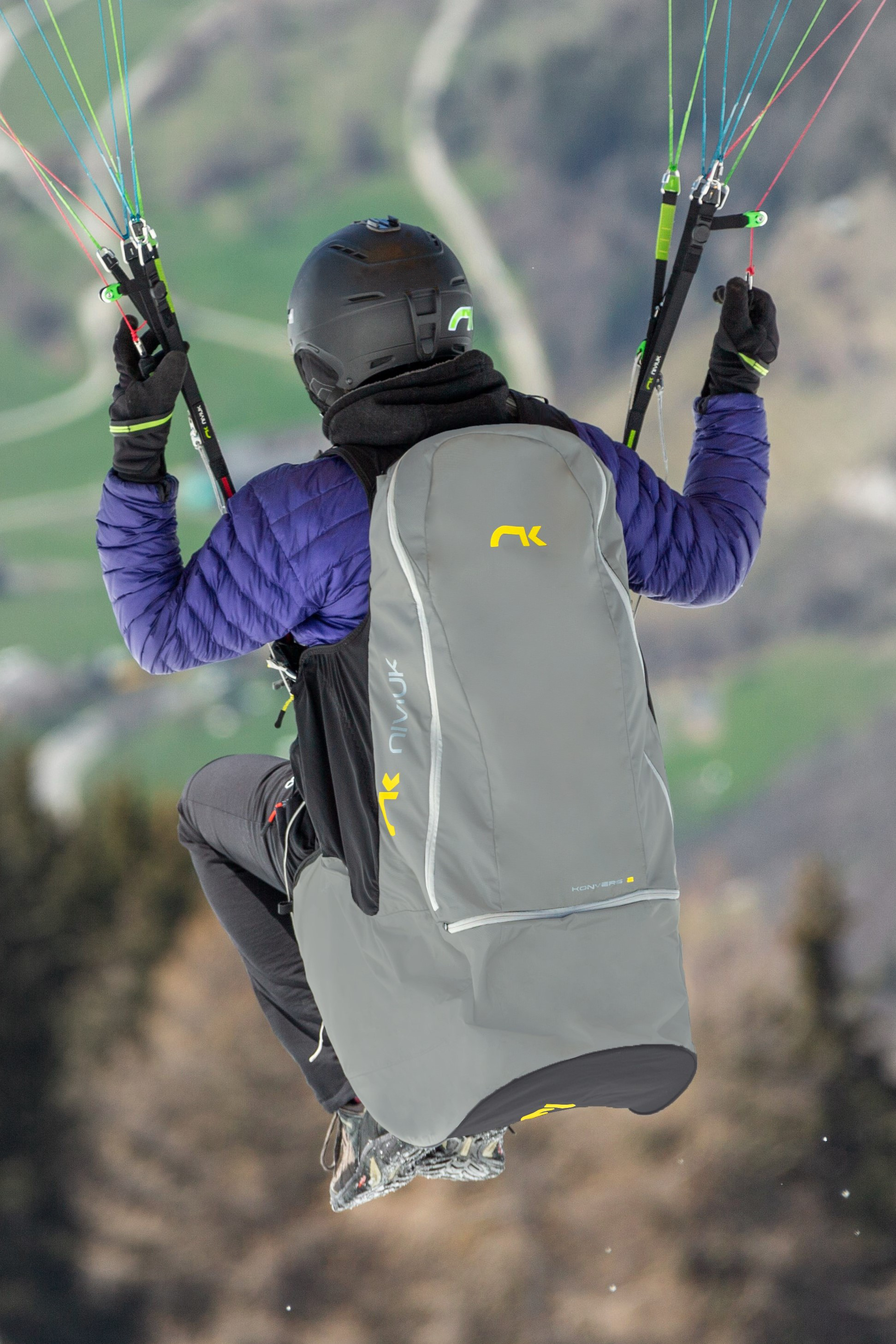
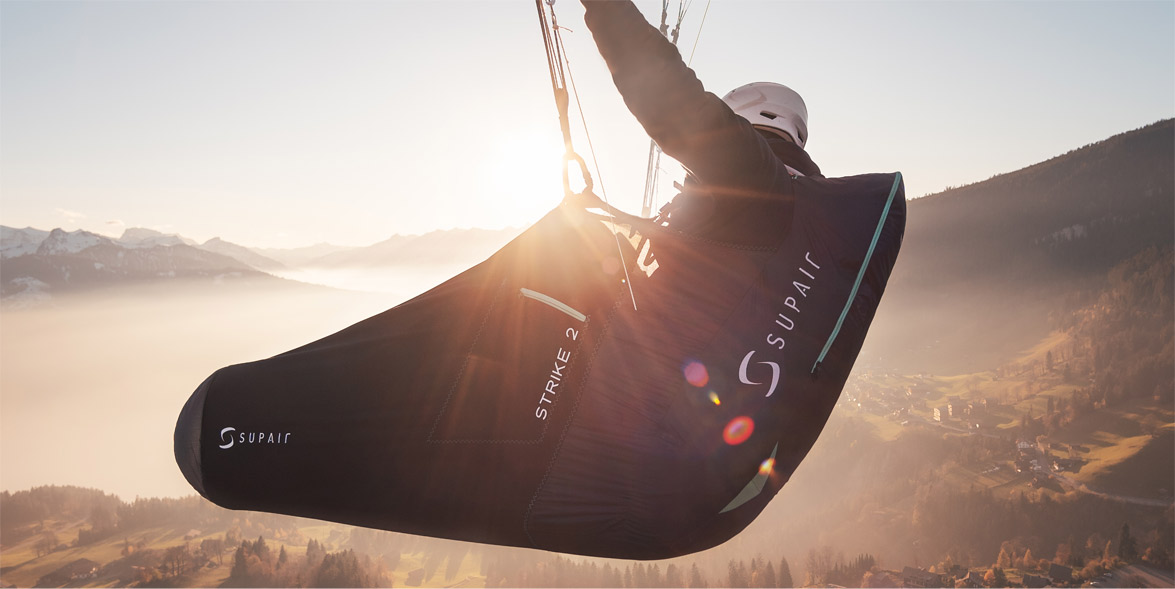
TANDEM HARNESS : PARAGLIDING FOR TWO
As their name suggests, tandem paragliding harnesses are designed for pilots who want to give their first paragliding experience. Tandem harnesses generally fall into three main categories:
- Pilot paragliding harnesses, which generally have a fairly open crotch to accommodate the passenger during the first flight.
- Passenger paragliding harnesses, which resemble classic paragliding harnesses, and are generally designed to be adaptable to as many individuals as possible.
- Children's paragliding harnesses, to accommodate smaller children where normal passenger harnesses would be too big.
PARAGLIDING SPEED RIDING AND FLYING HARNESS : SPECIFIC PARAGLIDING FLIGHTS
These harnesses, designed for very specific paragliding activities, allow you to switch between sitting and standing positions more easily than with conventional harnesses. They consist exclusively of leg straps and are generally relatively light.








